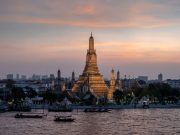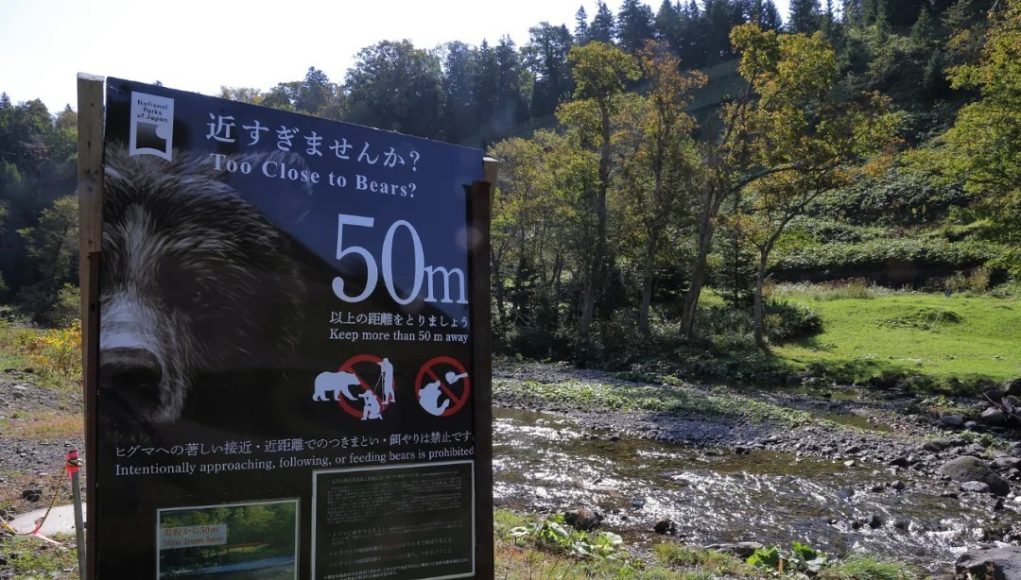(04.11.2025, Singapore)This autumn, Japan saw a sharp rise in bear encounters nationwide: wild bears stormed into convenience stores, wandered onto airport runways, and even entered private homes refusing to leave. By the end of October, 12 people had been killed and over 170 injured in bear attacks, the highest toll since records began in 2006.
This has led some Chinese media outlets to raise alerts, urging Chinese tourists to exercise caution when traveling to Japan or to rethink their trips. Japan remains a popular destination attracting 4.7 million Chinese tourists in the first half of this year—making up over 20% of all inbound tourists to the country.
According to Chinese news and commentary magazine China News Weekly, wild bears have been spotted in popular Japanese tourist spots including Kyoto, Sapporo, Shirakawa-go, Karuizawa, and even the outskirts of Tokyo. Police, hunters, and local officials are stretched thin, and some local governments are even requesting assistance from the Self-Defense Forces.
On Chinese social media, one user wrote: “I’ve booked a hot spring hotel in Hokkaido—now I’m feeling a bit anxious,” reported the Weekly.

On October 25 and 26, Kyoto police received at least five reports of bear sightings. One of these occurred just a 15-minute walk from the popular Arashiyama Bamboo Grove. On the morning of October 5, when Chinese tourist Xiaoxiao arrived at Shirakawa Village in Gifu Prefecture, a dark figure suddenly darted out from the bushes and lunged at a Spanish tourist, scratching the person’s right arm. It was then that Xiaoxiao realized she was only about 20 m away from a wild bear.
Shirakawa-go authorities have recorded nearly 100 bear sightings since spring. triple the usual number for this time of year. Out of safety concerns, the village cancelled its four-day autumn foliage illumination event, a magical occasion for photography lovers.
The situation is far grimmer in the country’s northeast. In Iwate Prefecture, three fatal bear attacks were reported in just two weeks. In one case, a hot spring worker was dragged into the mountains and killed.
Even though the Natsugō Highlands hot spring area is over 20 minutes away by mountain road from the incident site, many hotel bookings have been canceled, causing daily guest numbers to plunge by around 90%.
Akita Prefecture has been hit hardest by the bear crisis. By the end of October, 52 people had been injured and two killed. In one incident, a bear stayed inside a private home for an entire 24 hours. Efforts by police and hunters to lure it out failed. Over-stretched, authorities have called for assistance from the Self-Defense Forces.
In October alone, authorities in Sapporo received over 120 reports of bear sightings—five times the usual number. Some were injured when bears attacked them while walking their dogs in parks. Bears even entered residential areas to raid walnut trees, forcing the police to “shoot them on the spot.”
Unlike the Asian black bears common on Honshu, Hokkaido’s brown bears are bigger and more powerful. Some weigh over 400 kg and could run up to 60 km/h. When they attack, escaping on foot is nearly impossible.
Even so, Alex, who has lived in Sapporo for two years, told China New Weekly that he is not too worried. “Most bear sightings happen in the western and southern districts, over 10 km from downtown.
Those areas are sparsely populated and aren’t commercial or tourist spots,” he said. Ms. Yu, who moved there earlier this year, remains cautious. “Bear tracks were found in a large park near my home,” she said. “I don’t dare take my children there anymore.”
Why so many bear encounters this year? Experts say the direct reason bears are entering towns is simple—they’re hungry.
Japan faced extreme heat and drought this summer caused by climate warming. Beech trees in the northeast and oak and hornbeam trees in the central regions as a result produced little to no acorn.
A study by Japan’s Ministry of Agriculture, Forestry and Fisheries shows that the frequency of black bear sightings is closely tied to acorn yields. In years when these are scarce in the mountains, dominant bears leave the deep forest and move into the lower mountain areas near human settlements in search of food. This, in turn, forces mother bears that normally stay in these lower areas with their cubs to venture into busy urban neighborhoods.
Bears re by nature anxious and wary. In human settlements, without the cover of dense trees, they become more easily agitated. When coming across people, cubs and mother bears may lash out.
Japan’s demographic trends are also contributing to the rise in bear activity. Over the past decades, young people left the rural areas in droves while the older generations gradually passed away. Hence, prefectures suffering steep population losses—like Akita, Iwate, and Aomori—have become hotspots for bear sightings.
The “new-generation bears” are not as afraid of humans. They boldly climb trees to feast on fruits, raid offerings at household Buddhist altars, and even pass through automatic doors to enter supermarkets and office buildings. From April to October 22 this year, 114 bear attacks occurred in densely populated areas, making up 66% of all reported incidents.
Japan is believed to have more than 40,000 black bears, and Hokkaido hosts about 10,000 brown bears. Bears now roam over 60% of the country. As their numbers grow and human populations shrink, managing bear encounters has become an increasingly difficult task.
In the meantime, hunters grow old and become fewer. In 1970, nearly 500,000 people held gun licenses, but today that number has fallen below 100,000, with 60% of active hunters over the age of 60.
Last year, hunters involved in government bear control operations in Hokkaido earned a modest daily wage of only 8,500 yen (about S$72). Some regions provide extra subsidies, but these are minimal.
By November, bears would start heading into hibernation. With the first snow settling, they would return to the mountains, leaving the cities to humans. Japan’s “bear threat” is expected to ease for a while, pointed out China News Weekly.
Even so, it is up to each tourist whether to risk going into a bear-prone area, it noted.





































